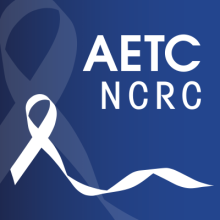Image

This infographic highlights challenges and barriers to achieving viral suppression among people with HIV with mental health disorders, and presents the evidence-informed Patient-Centered HIV Care Model approach for increasing viral suppression rates among this population.
References
- Remien RH, Stirratt MJ, Nguyen N, Robbins RN, Pala AN, Mellins CA. Mental health and HIV/AIDS: the need for an integrated response. AIDS. 2019;33(9):1411-1420. doi:10.1097/QAD.0000000000002227
- Bing EG, Burnam MA, Longshore D, et al. Psychiatric disorders and drug use among human immunodeficiency virus-infected adults in the United States. Arch Gen Psychiatry. 2001;58(8):721-728. doi:10.1001/archpsyc.58.8.721
- Center for Behavioral Health Statistics and Quality. 2016 National survey on drug use and health: methodological summary and definitions. Rockville, MD: Substance Abuse and Mental Health Services Administration; 2017.
- HIV and AIDS and mental health. National Institute of Mental Health. Accessed June 30, 2023. https://www.nimh.nih.gov/health/topics/hiv-aids.
- Dawson L, Kates J. What do we know about people with HIV who are not engaged in regular HIV care? KFF. June 26, 2023. Accessed June 30, 2023.
- Lesko CR, Hutton HE, Fojo AT, Shen NM, Moore RD, Chander G. Depression and HIV viral nonsuppression among people engaged in HIV care in an urban clinic, 2014-2019. AIDS. 2021;35(12):2017-2024. doi:10.1097/QAD.0000000000003005
- Byrd KK, Hardnett F, Hou JG, et al. Improvements in Retention in Care and HIV Viral Suppression Among Persons with HIV and Comorbid Mental Health Conditions: Patient-Centered HIV Care Model. AIDS Behav. 2020;24(12):3522-3532. doi:10.1007/s10461-020-02913-2
- Patient Centered HIV Care Model PCHCM: Compendium of Evidence-based Interventions and Best Practices for HIV Prevention, Evidence-Informed Structural Intervention, Evidence-Informed for Retention in Care. Centers for Disease Control and Prevention. 2020. Accessed June 30, 2023.
Browse more
Languages
